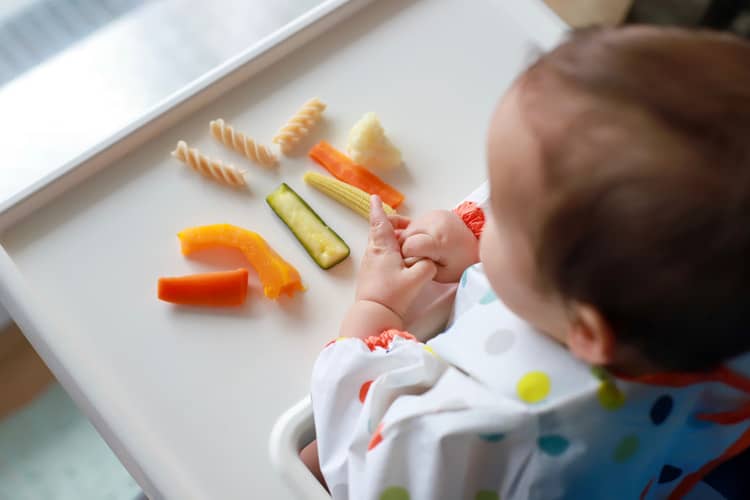
Immunological window in children - what to administer and what is the procedure?
It may seem to many that allergies and intolerances have taken over our world. The cause can be excessive use of medicines, but also a change in lifestyle. Hygiene has progressed for the better, so we successfully avoid a collision with the necessary amount of bacteria, against which the body should develop antibodies in the course of life. In order for the organism not to create an allergen from some food, it is necessary in a certain period of the child's life, in the so-called immunological window, try to introduce potential allergens into the baby's daily diet. Such an opportunity for experimenting with the child's diet opens up between the end of the 4th month and reaching one year.
What is the immunological window, when is it appropriate to replace the maternal or artificial milk with solid foods and what role gluten plays in the immunological window period in children, we will summarize in the following paragraphs of our article.
What is an immunological window?
Although the term "immunological window" is often inflected together with the word "myth", mainly due to the fact that it began to appear in publications and on the Internet only in the last decades, the immunological window is characterized as a stage of a child's life in which it completely disappears antibodies that entered the baby's blood during pregnancy. The baby is in this phase between the 4th and 7th months of life, and it is basically a unique and ideal period for introducing allergens to the baby's developing organism.
This is mainly due to the fact that the child's stomach is in a state of tolerance to unknown allergens in food. In this way, it is possible to achieve the so-called oral tolerance of allergens. However, it does not necessarily occur if the child's body comes into contact with allergens too early or too late. This kind of procedure leads to the emergence of food allergies and various diseases related to intolerances to selected foods.
The baby's gradually forming and building immune system takes care of destroying bacteria that do not belong to the body, while ensuring a certain tolerance to individual food proteins, which means that there are no significant immune reactions to the food served. In this case, it is not about the introduction of the first complementary foods in order to replace selected intervals reserved for breastfeeding, but rather about initiating the process of creating antibodies against possible allergens that could cause deep-rooted allergies and intolerances to common ingredients in the future.
At the end of the last century, experts recommended the introduction of allergens, or risky foods, such as eggs, fish, nuts or wheat, in the children's diet until after the 1st or even 3rd year of the child's life. In the course of the following decades, however, it was concluded that an immunological window stage occurs during child development, when the likelihood of developing food allergies decreases with gradual exposure of the child's body to various allergens.
There are even studies that have confirmed that children receiving peanuts regularly from a young age are less likely to develop allergies than children who avoided this raw material. Despite the number of professional studies, the issue of the immunological window remains an unexplored part of child development, which requires very careful handling, while the greatest care should be taken in the case of babies, where, based on family history, genetic inheritance of food allergies is possible. While in the case of a genetic predisposition originating from both parents, the child avoids the allergy with a 70 percent probability, the allergy occurring in only one of the parents reduces the risk of hereditary transmission of food allergy to 30 to 45 percent.

When to replace milk with solid food?
Babies should be fed breast milk for as long as possible, but this does not mean that their nutrition should only consist of this one component. Complementary feeding, i.e. the gradual introduction of the first complementary foods, is recommended for infants from the 6th month of life, while in the case of babies raised on artificial milk, the limit is shifted to the end of the 4th month of the child's life.
However, the introduction of complementary foods does not mean that breastfeeding is automatically stopped. Snacks should initially replace one, maximum two meals a day, while the most frequent intervals of the first snacks are lunchtime and bedtime feedings. Breastfeeding and complementary feeding therefore go hand in hand, and for the proper development of children's immunity, it is advisable to include the allergens themselves in this dietary cycle. However, it is necessary to adhere to specific procedures, which include the feeding itself, but also the immunological window.
In the case of the introduction of complementary foods, it is important that the diet is sufficiently balanced, because the unhealthy composition of complementary nutrition can lead to health complications in the future in the form of obesity, anemia and other civilizational diseases associated with a lack of vitamins and minerals. Mother's milk has a high amount of necessary nutrients, which, in addition to its nutritional function, also has another, namely a protective one. It contains various substances that protect the child's body from inflammation and bacteria, which helps especially during the immunological window, when the baby develops an oral tolerance to certain foods. That is why it is important that, in addition to introducing solid foods and allergens into the baby's daily diet, the baby should also be fed with breast milk.

Immunological window and allergen introduction procedure
Procedures for introduction of allergens within the immunological window vary depending on the specific country. It is mainly about the spread of raw materials used in that country. While we mainly focus on possible gluten and milk intolerances, or lactose, in North America they are trying to include eggs and peanuts in the children's diet as soon as possible.
So how and what to give the baby to taste during the immunological window? While vegetable and meat side dishes are served in a dose worthy of one breastfeeding, the administration of food within the immunological window should be started in really small quantities, in the form of bread crumbs, licking a spoon previously smeared with avocado spread or tasting minimal portions of food containing eggs, peanuts, fish or citrus fruits. In connection with fish meat, it is important to be careful, not only in terms of the quality of the raw material, but also the state of deboning of the fish when buying.
As for the allergens contained in various types of nuts, nuts and seeds, it is necessary that they are given to the baby in small quantities and in a finely ground form, thereby avoiding the risk of inhaling these raw materials in children.
Despite the fact that the introduction of complementary foods and the immunological window are two processes of establishing the child's food habits that overlap in terms of the time horizon, it is possible to state that there is a slight difference between them, especially in terms of the amount of food served. While one complementary food potentially replaces one daily dose of maternal or artificial milk, allergens are given in the immunological window in the form of regular tasting of minimal pieces, i.e. bread crumbs, grains of rice or drops of citrus juice.
During both of these processes, there may be negative reactions manifested through digestive difficulties, rashes or other symptoms of a physiological nature, which must be monitored very carefully in babies.

Lactose in the immunological window in children
During the immunological window, the baby should still receive maternal or artificial milk, while it is true that you should completely avoid cow's or other animal milk. Many infants have an allergic reaction to milk of animal origin even before they reach the 6th month of life, and this fact depends mainly on the time when the child meets the protein from animal milk for the first time. The allergic reaction to cow's milk in most children disappears by the 1st or 6th year of the child's life.
In relation to milk, plant-based alternatives in the form of soy, almond or coconut milk are also not recommended. These "milk" versions can also cause an allergic reaction. Although their main disadvantage is their inability to cover the nutritional needs of babies. Only mother's milk has this "power", or artificial milk formulas.
Gluten in non-breastfed and breastfed children
In the immunological window, it is essentially a matter of tasting the food that you, as a parent, take in the vicinity of your child. An important part of this period is the introduction of gluten to the child's organism. If a child is exposed to this food component later on, the likelihood of developing celiac disease, diabetes and other civilizational diseases increases.
As we mentioned above, breast milk has a protective nature, thanks to which feeding gluten-containing foods to breastfed children does not burden their organism to the extent that one would imagine. Artificial milk, or artificial milk formulas nowadays are adjusted so that they are as close as possible to breast milk in composition. This means that including formula-fed babies is safe and acceptable to include gluten in their diet, but a more cautious approach than breast-fed babies is recommended.
Regardless of the type of milk received (mother's or artificial), it is most important to regulate the amount of gluten administered. A large amount of gluten can cause celiac disease in a child in the future. Initially, it is therefore recommended to give the baby approximately 6 grams of wheat per day, mainly in the form of wheat flour mixed into vegetable or fruit snacks, or in the form of age-appropriate cookies and biscuits.

Immunological window in children - experience
On the well-known Modrý konik discussion forum, a question appeared related to the immunological window and the gradual introduction of complementary foods and allergens into a child's diet before reaching the first year of life. The discussants noted in several cases that feeding and habituation of children to allergens mainly depends on the child's individual attitude towards the food offered. While some children accept complementary foods without problems, others stubbornly refuse them, which can lead mothers to postpone the gradual introduction of complementary nutrition by several weeks. Several discussing mothers highlighted the importance of including gluten in the child's daily diet, which can help prevent celiac disease and other civilization diseases in the future. In the case of gluten, they chose the form of bread crumbs or children's biscuits dipped in unsweetened tea.
Here, too, it can be stated that each case is purely individual and depends on the mother or the pediatrician's advice, what is given to the child during the immunological window. It is necessary to follow certain procedures for creating a children's menu, regulate the amount of raw materials served and then monitor his reactions to a specific diet and its individual components.
The most frequent questions - FAQ
Are you also interested in other information related to the topic of the immunological window and the introduction of allergens or first foods into the child's diet? Can you think of other questions that were not answered in the text of the article or in the question and answer section ? Do not hesitate to put them in the comments below the article. We will answer them as soon as possible.
What should I do if my child has a negative reaction to some ingredient from the food being given?
How much food does a child have to take daily to condition the production of antibodies?
Can allergies be completely prevented with the help of an immunological window?
When should you start applying allergens within the immunological window?
Since when can children have quinoa?
Pridať komentár





